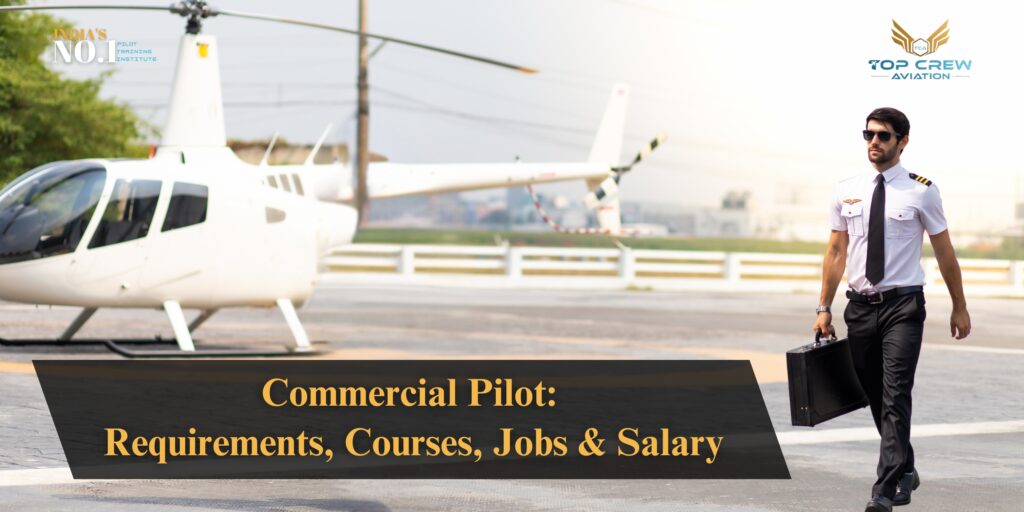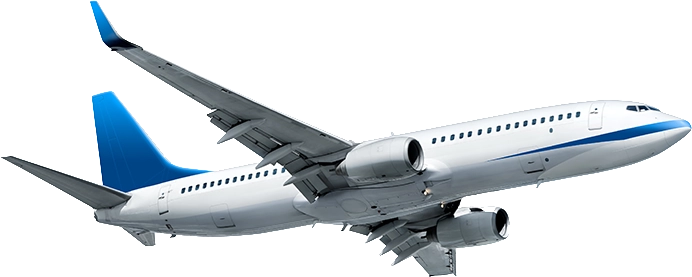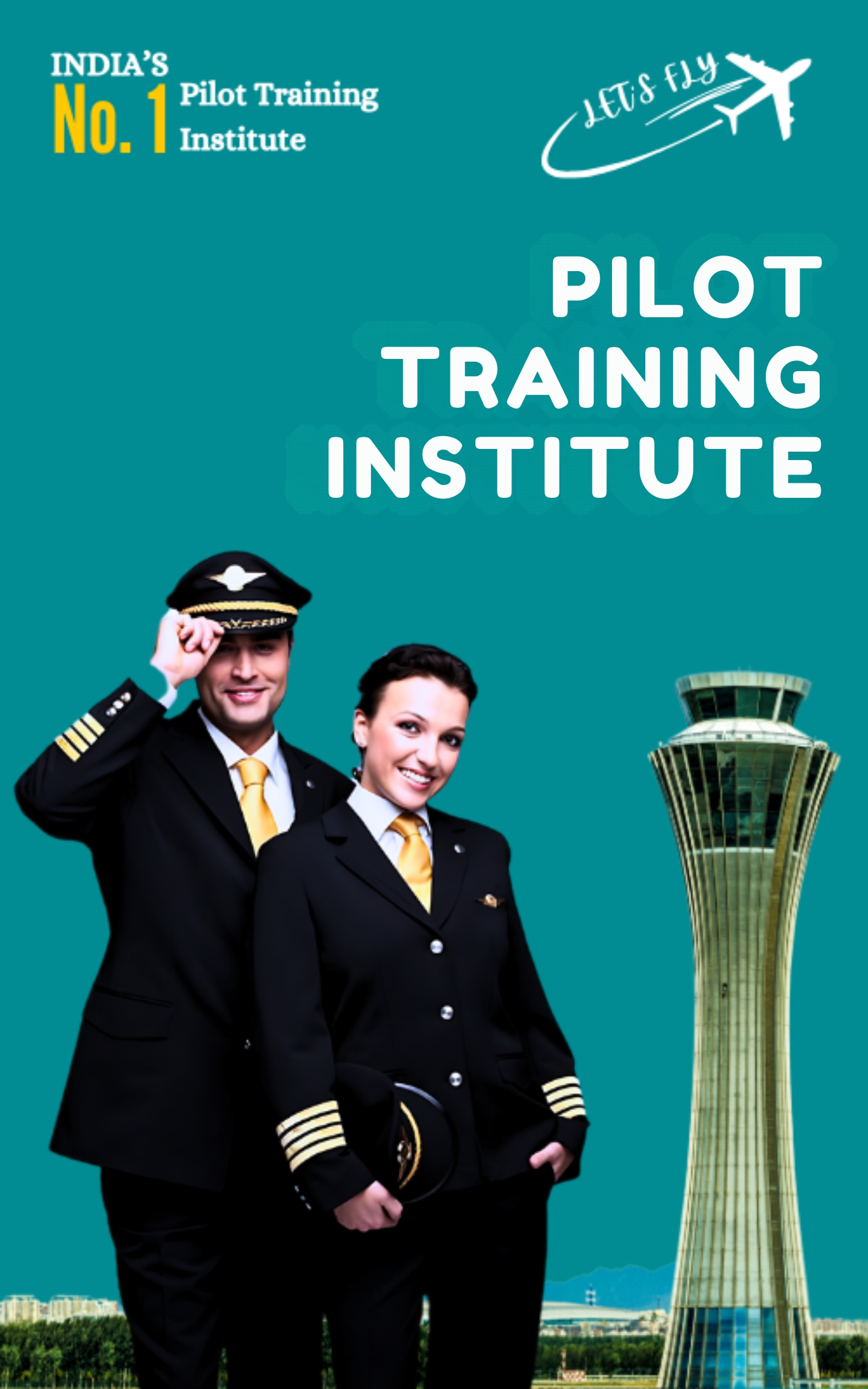Becoming a Commercial Pilot: Understanding the Requirements, Courses, Potential Job Opportunities and Salaries
Have you ever thought about what it’s like to be a commercial pilot? Becoming a commercial pilot is a challenging yet enriching job that requires dedication and discipline. Whether you wish to fly people worldwide or transport cargo to far-off places, you must first understand the path you intend to take clearly.
Here, you will understand the basic requirements you need to fulfil, the available opportunities, and the salary that comes after completion.
Commercial Pilot:
A commercial pilot is a professional pilot who is trained and licensed to fly aircraft and is paid for it. Unlike a private pilot who operates for leisure, a commercial pilot works for airlines, charter services, tourism companies, cargo companies, or flight instructors.
Being a commercial pilot isn’t just about flying a plane from one place to another. It’s about keeping everyone safe, knowing how to handle tricky weather, following aviation rules, staying in touch with air traffic control, and being able to make fast decisions when things don’t go as planned.
A commercial pilot is trained and allowed to fly the following types of aircraft:
- Domestic and international passenger flights
- Cargo Carrier Aircraft
- Chartered and privately owned jets
- Helicopters (with specific training)
- Agricultural aircraft and medical evacuation aircraft
If you dream of turning your love for aviation into a full-time career, becoming a licensed commercial pilot is your first step.
How to Become a Commercial Pilot – A Step-by-Step Guide
Becoming a commercial pilot is a dream job for many people who love flying and adventure. The idea of flying an aircraft across cities or continents, wearing the uniform, sitting in the cockpit, and living a luxurious life with a high salary is exciting and inspiring. But turning that dream into reality takes careful planning, discipline, and the proper training.
This manual will explain how to become a commercial pilot starting from zero.
Step 1. Meet all the Commercial Pilot Requirements
If you’re serious about pursuing an aviation career, you must meet a few essential commercial pilot requirements. These commercial pilot requirements make sure you’re eligible to begin training.
You need to meet some commercial pilot requirements before starting a pilot training program.
- Commercial Pilot Requirement: Educational Qualifications
To become a commercial pilot, you must complete:
- Higher Secondary Education (10+2 or equivalent) with Physics and Mathematics
- If you don’t have these subjects, you can still study them through open schooling like NIOS.
- English proficiency. Since aviation is a global industry, all communication between pilots and air traffic control happens in English only.
- Commercial Pilot Requirement: Age Requirement
You can start the commercial pilot course when you are 17 years old. However, you need to be at least 18 years old to apply for a Commercial Pilot License (CPL).
There is no upper age limit.
- Commercial Pilot Medical Requirements
Medical fitness is necessary in aviation. You need to be fit to fly commercial aircraft. These are your two medical tests:
- Class 2 Medical (Initial Screening):
This is usually the first test before enrolling in a flying school.
It includes general physical checkups, eye tests, hearing tests, an ECG, and blood work.
You can start training once you pass.
Flying an aircraft comes with great responsibility, so pilots must be medically and physically fit to operate safely. That’s where the Class 1 Medical Examination comes in.
This step is a must if you want to become a commercial pilot.
- Class 1 Medical includes:
- Vision test (allowed correctable 6/6 vision with glasses or lenses).
- Hearing test: You must be able to hear a normal conversation at a specific distance.
- Blood pressure and heart checks (ECG).
- Neurological exam: Tests for brain function and reflexes.
- Blood and urine tests: These are done to make sure you’re in good overall health.
- Mental health screening: Aviation authorities look for signs of stress, anxiety, or conditions that could impair performance.
For pilots under 40, the medical certificate should be renewed regularly every 12 months. Every 6 months for those over 40 years old.
- Commercial Pilot Height Requirements
The DGCA (India) and most aviation authorities do not specify height requirements, be it minimum or maximum. As a rule of thumb, you need to be able to reach and comfortably operate all the controls of the aircraft, including the rudder pedals, throttle, switches, etc.
- Commercial Pilot Weight Requirements
Governmental bodies responsible for health and pilot license issues check whether you are medically fit by calculating your Body Mass Index (BMI).
If your body mass puts you in the overweight or obese range, then you are much more likely to be medically disqualified due to other concerns such as high blood pressure, diabetes, or even heart problems.
Being physically fit does not only mean passing the medical examination. Being a pilot involves dealing with long working hours, fatigue, and crossing multiple time zones, all of which make sustaining good health necessary for a successful career.
Step 2: Enrol in a DGCA-approved Commercial Pilot Course
Once you’re medically fit, the next big step is to join a certified flying school. Depending on your budget, preferences, and long-term goals, you can study in India or abroad.
- What to Look for in a Flight Institute
- DGCA or aviation authority approval (depending on the country)
- Fleet of aircraft (look for variety and quality)
- Experienced instructors and training team
- Simulators for instrument training
- Accommodation and facilities
- History of student placements
- Commercial Pilot Course: Duration
18 to 24 months, depending on your pace and school.
To be eligible for a Commercial Pilot License, you’ll need to complete at least 200 hours of flight time
- Commercial Pilot Course
This commercial pilot course contains specialised training that will prepare you to take charge of a commercial flight. The course provides theoretical learning and practical flight training, preparing you for the responsibilities of professionally flying passengers or cargo.
- Pilot Commercial Course includes:
Acquiring a pilot’s commercial license comes in a lot of steps:
- Ground School: Along with flying lessons, you’ll attend ground school. Here, you’ll learn the basics of aviation, including navigation, weather patterns, air traffic control, and how aircraft systems work
- Private Pilot License (PPL): The first step is to obtain a private pilot license, which allows you to operate small aircraft.
- Flight Hours: One of the core requirements for obtaining a commercial pilot license (CPL) is having a minimum set number of flight hours. This generally translates to approximately 250 hours of flight activity, which includes solo flights, cross-country trips, and other activities.
- Commercial Pilot License (CPL): After completing the necessary flight hours and ground school, you’ll take a written exam and a flight test to earn your CPL. This certification is what qualifies you to work as a commercial pilot
- Additional Certifications: Depending on the flying you want (e.g., flying passengers or cargo), you may need to pursue further certifications like an instrument rating, multi-engine rating, or an airline transport pilot (ATP) license.
- Commercial Pilot Course Fees
The cost of a commercial pilot course can vary depending on the country, flight school, and aircraft type used for training. On average, you can expect to spend between ₹30,00,000 to ₹55,00,000 to complete your Commercial Pilot License (CPL) in India. Many flight schools offer financing options, and some airlines may even provide sponsorship programs to help with the costs.
Step 4: Pass DGCA Written Exams
As part of your training, you’ll take several written exams to make sure you’re fully prepared to fly with confidence. These are mandatory for the issuance of your Commercial Pilot License in India.
- DGCA CPL Exams include:
- Air Navigation
- Aviation Meteorology
- Air Regulations
- Technical General
- Technical Specific (based on the aircraft you train on)
- RTR (Radio Telephony Restricted) – issued by WPC (Wireless Planning Commission)
Step 3: Commercial Pilot Requirement: Complete Your Flight Training Hours
To be eligible for a Commercial Pilot License, you must complete at least 200 hours of flight time. This includes:
- 100 hours of Pilot-in-Command (PIC) time
- 50 hours of cross-country flying
- 15 hours of instrument flying
- 5 hours of night flying
Each of these flights is logged and verified by your flight instructor or school.
Flight hours are your real-world experience. The more time you spend flying, the more your skills improve—and so does your confidence
Step 4: Pass the Check Ride (Skill Test)
Your final step is the checkride—a practical flight test conducted by a DGCA-approved examiner or a designated pilot examiner abroad (if you are training overseas).
- What happens in a check ride?
- You’ll be asked to perform routine and emergency procedures.
- You’ll demonstrate takeoffs, landings, navigation, and the use of instruments.
- You must communicate clearly with ATC, make decisions, and control the aircraft.
After passing all the requirements, you’ll proudly receive your Commercial Pilot License (CPL) and be ready to take off in your career.
What is a Commercial Pilot License (CPL)?
A Commercial Pilot License (CPL) is the legal document that allows you to fly aircraft and earn money as a professional pilot. This is different from a Private Pilot License (PPL), which only allows flying for personal use and not for profit.



